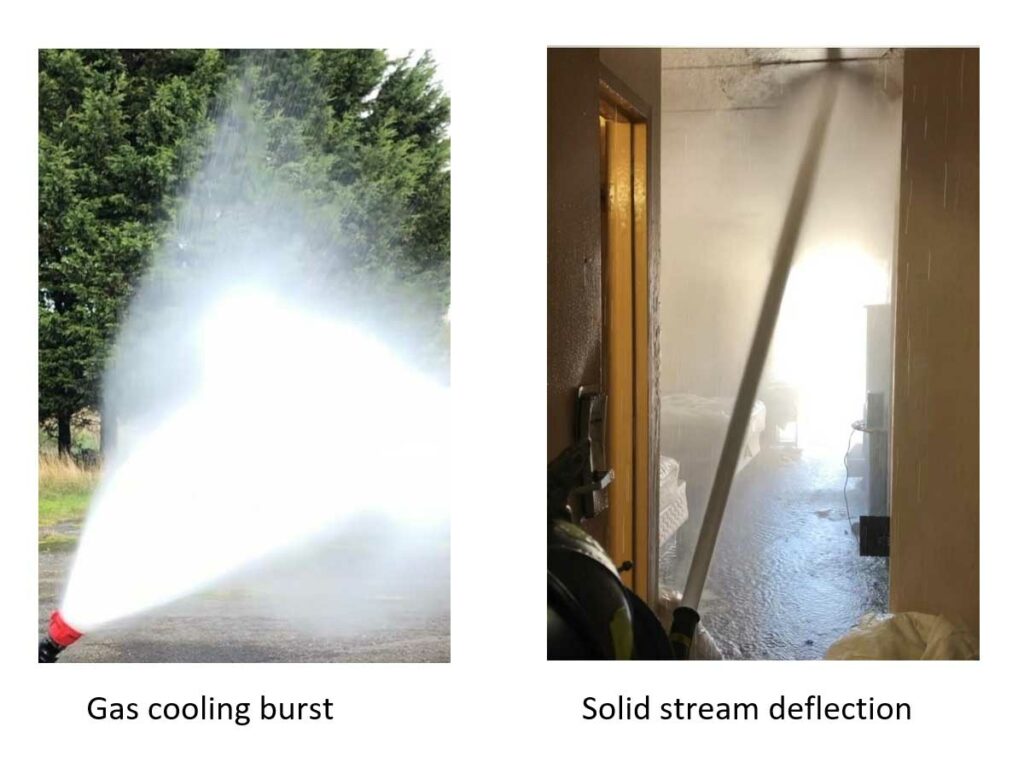
Firefighters measure attack streams through pressure, size, flow, and pattern. All of these have certain qualities that impact a firefighting stream’s survival and effectiveness. A stream’s life has four components that help it cool and extinguish: shape, volume retention, impact dispersal, and gravity coverage.
Straight streams change exiting the nozzle, with the stream going wide initially and then recessing before returning to their original shape. Solid streams stay the same leaving the nozzle. Fog streams push toward the selected flow pattern upon leaving the nozzle.
- Fighting Fires from the Unburned Side
- Tactical Safety: Nothing Showing
- DICERS-VO for Extinguishment
- NOZZLES AND HANDLINES FOR INTERIOR OPERATIONS
Stream survival for straight and solid streams is similar, with solid most likely being ahead. Stream survival is important when we want the stream to fall on burning objects and the floor. When we are attempting to cool a gas layer, the stream has only one mission: to cool the gases. Gas cooling streams will have a diminished effect on the other three components—volume retention, impact dispersal, and gravity coverage. You need a certain amount of stream volume retention to obtain impact dispersal and gravity coverage.
The impact dispersal of various streams depends on the stream angle, with straight and solid streams hitting similarly. A solid stream falling on burning objects during breakover or a direct hit will still retain most of its volume. Solid streams don’t remain solid once they strike a surface. A fog pattern will have a wider impact hit space than that of a straight or solid stream and a different dispersal. Fog streams do not travel as far as straight or solid streams, especially at wide settings. When a stream impacts a surface, it will change shape and direction.
All streams are affected by drag. It is their first fight, but because they are traveling so fast it’s almost ignored. We tend to only think of drag as the accumulation of drag ending a stream’s flight. Gravity on the stream is most noticeable when its velocity is reduced. We see this when breakover starts and when a stream deflects off a surface and now falls onto an elevated surface or the floor.
You must decide what level of survival you want from your fire stream. If you are using a solid stream or a straight stream you will have the best chance of obtain all four components during fire attack. If you use a fog pattern for attack you may get the three remaining components, however they will be diminished due to the stream shape. Fog is not recommended for interior fire attack. Gas cooling is not intended to provide the other components beyond the initial stream shape.
Plan your attack by selecting the stream you believe is most effective.
Keep Fire in Your Life
RAY McCORMACK is a retired lieutenant and 38-year veteran of the Fire Department of New York. He is the co-creator and editor of Urban Firefighter. He delivered the keynote address “True Values of a Firefighter” at FDIC 2009.

